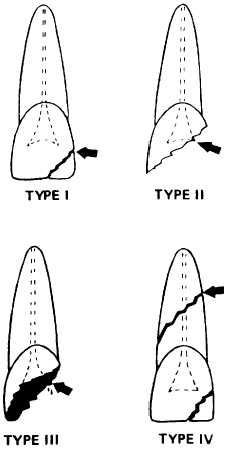If the above efforts do not control the hemorrhage, and if the bleeding appears to be coming directly from the alveolus, dry the alveolus, pack it with Surgicel® or Gelfoam®, and place a gauze pad as a pressure dressing over the wound site. Have the patient bite down for 15 to 20 minutes. Refer the patient to a dental treatment facility if the hemorrhage continues. Occasionally postextraction hemorrhage occurs 3 to 5 days following the extraction. In general, follow the same treatment procedures for hemorrhage within the first 24 hours.
Alveolar Osteitis
This condition, also known as dry socket, results when a normal clot fails to form in the socket of a recently extracted tooth. Since this condition is usually very painful, always consider it a serious emergency.
SYMPTOMS—A patient presenting with a dry socket will usually have a history of extraction within 5 days; a complaint of excruciating, constant pain; and the loss of a blood clot or the failure of a clot to form.
SIGNS—Upon examination, you will probably note the absence of a blood clot in the socket of a recently extracted tooth; however, the socket may contain food debris. Alveolar bone may be visible in the socket, and you may smell foul breath. The patient’s temperature is probably elevated.
TREATMENT—Gently rinse the socket with warm saline. Moisten a small strip of surgical gauze with eugenol, and press the gauze between two dry gauze pads to remove excess moisture. Place a strip of surgical gauze loosely in the socket. Do not exert pressure on the socket when placing the strip. Have the patient return daily. Clean the socket and change the dressing until the condition is corrected.
Fractured Teeth
Pain in fractured teeth usually results from the irritation of the pulp tissue. The primary goal is to lessen the pain and, if possible, prevent further injury while awaiting treatment by a dentist.
There are four different types of tooth fractures.

Figure 2-21.—Types of tooth fractures.
TREATMENT—Smooth sharp edges of the chipped area with sandpaper strips to eliminate irritation of the tongue and lips. Apply small amounts of cavity varnish over the chipped area. Tell the patient not to take extremely hot or cold foods and liquids, since this may damage the tooth pulp and be very painful.

